Self-Sensing Properties of Fly Ash Geopolymer Doped with Carbon Black under Compression
Abstract
:1. Introduction
2. Materials and Methods
- Cyclic linear loading and releasing of the samples in the range of 0–10 kN with a loading rate of 300 N·s−1 and constant amplitude (Figure 1a).
- Cyclic linear loading and releasing with variable amplitude. The maximum force was 50 kN for the reference sample and 35 kN for samples with carbon black, due to their lower compressive strength. The loading rate was 500 N·s−1 (Figure 1b).
- Linear loading with a loading rate of 200 N·s−1 up to failure.
3. Results and Discussion
3.1. Piezoresistivity and Acoustic Emission during Cyclic Loading
3.2. Piezoresistivity and Acoustic Emission under Monotonous Loading until Failure
4. Conclusions
Author Contributions
Funding
Institutional Review Board Statement
Informed Consent Statement
Data Availability Statement
Conflicts of Interest
References
- Miller, S.A.; Moore, F.C. Climate and health damages from global concrete production. Nat. Clim. Chang. 2020, 10, 439–443. [Google Scholar] [CrossRef]
- Han, B.; Zhang, L.; Ou, J. Smart and Multifunctional Concrete toward Sustainable Infrastructures; Springer: Singapore, 2017; pp. 369–377. [Google Scholar]
- Tang, Z.; Li, W.; Hu, Y.; Zhou, J.L.; Tam, V.W. Review on designs and properties of multifunctional alkali-activated materials (AAMs). Constr. Build. Mater. 2019, 200, 474–489. [Google Scholar] [CrossRef]
- Han, B.; Yu, X.; Ou, J. Self-Sensing Concrete in Smart Structures; Butterworth-Heinemann: Oxford, MS, USA, 2014. [Google Scholar]
- Tian, Z.; Li, Y.; Zheng, J.; Wang, S. A state-of-the-art on self-sensing concrete: Materials, fabrication and properties. Compos. Part B 2019, 177, 107437. [Google Scholar] [CrossRef]
- Bernal, S.A.; Provis, J.L. Durability of alkali-activated materials: Progress and perspectives. J. Am. Ceram. Soc. 2014, 97, 997–1008. [Google Scholar] [CrossRef]
- Provis, J.L.; Van Deventer, J.S.J. (Eds.) Geopolymers: Structures, Processing, Properties and Industrial Applications; Woodhead Publishing: Sawston, UK, 2009. [Google Scholar]
- Faridmehr, I.; Nehdi, M.L.; Nikoo, M.; Huseien, G.F.; Ozbakkaloglu, T. Life-Cycle Assessment of Alkali-Activated Materials Incorporating Industrial Byproducts. Materials 2021, 14, 2401. [Google Scholar] [CrossRef] [PubMed]
- Vilaplana, J.L.; Baeza, F.J.; Galao, O.; Zornoza, E.; Garcés, P. Self-sensing properties of alkali activated blast furnace slag (BFS) composites reinforced with carbon fibers. Materials 2013, 6, 4776–4786. [Google Scholar] [CrossRef] [Green Version]
- Lamuta, C.; Bruno, L.; Candamano, S.; Pagnotta, L. Piezoresistive characterization of graphene/metakaolin based geopolymeric mortar composites. MRS Adv. 2017, 2, 3773–3779. [Google Scholar] [CrossRef]
- Rovnaník, P.; Kusák, I.; Bayer, P.; Schmid, P.; Fiala, L. Comparison of electrical and self-sensing properties of Portland cement and alkali-activated slag mortars. Cem. Concr. Res. 2019, 118, 84–91. [Google Scholar] [CrossRef]
- Hanjitsuwan, S.; Hunpratub, S.; Thongbai, P.; Maensiri, S.; Sata, V.; Chindaprasirt, P. Effects of NaOH concentrations on physical and electrical properties of high calcium fly ash geopolymer paste. Cem. Concr. Compos. 2014, 45, 9–14. [Google Scholar] [CrossRef]
- Vlachakis, C.; Perry, M.; Biondi, L. Self-sensing alkali-activated materials: A review. Minerals 2020, 10, 885. [Google Scholar] [CrossRef]
- Saafi, M.; Gullane, A.; Huang, B.; Sadeghi, H.; Ye, J.; Sadeghi, F. Inherently multifunctional geopolymeric cementitious composite as electrical energy storage and self-sensing structural material. Compos. Struct. 2018, 201, 766–778. [Google Scholar] [CrossRef] [Green Version]
- Demircilioğlu, E.; Teomete, E.; Schlangen, E.; Baeza, F.J. Temperature and moisture effects on electrical resistance and strain sensitivity of smart concrete. Constr. Build. Mat. 2019, 224, 420–427. [Google Scholar] [CrossRef]
- Biondi, L.; Perry, M.; McAlorum, J.; Vlachakis, C.; Hamilton, A. Geopolymer-based moisture sensors for reinforced concrete health monitoring. Sens. Actuators B Chem. 2020, 309, 127775. [Google Scholar] [CrossRef]
- Donnet, J.B. (Ed.) Carbon Black: Science and Technology; CRC Press: Boca Raton, FL, USA, 1993. [Google Scholar]
- Monteiro, A.O.; Cachim, P.B.; Costa, P.M. Self-sensing piezoresistive cement composite loaded with carbon black particles. Cem. Concr. Comp. 2017, 81, 59–65. [Google Scholar] [CrossRef]
- Lin, V.W.; Li, M.; Lynch, J.P.; Li, V.C. Mechanical and electrical characterization of self-sensing carbon black ECC. In Proceedings of the Nondestructive Characterization for Composite Materials, Aerospace Engineering, Civil Infrastructure, and Homeland Security 2011, San Diego, CA, USA, 8 April 2011. [Google Scholar]
- Wen, S.; Chung, D.D.L. Partial replacement of carbon fiber by carbon black in multifunctional cement–matrix composites. Carbon 2007, 45, 505–513. [Google Scholar] [CrossRef]
- Chen, M.; Gao, P.; Geng, F.; Zhang, L.; Liu, H. Mechanical and smart properties of carbon fiber and graphite conductive concrete for internal damage monitoring of structure. Constr. Build. Mat. 2017, 142, 320–327. [Google Scholar] [CrossRef]
- Grosse, C.U.; Ohtsu, M. Acoustic Emission Testing; Springer Science & Business Media: Berlin/Heidelberg, Germany, 2008; pp. 19–35. [Google Scholar]
- El Batanouny, M.K.; Larosche, A.; Mazzoleni, P.; Ziehl, P.H.; Matta, F.; Zappa, E. Identification of cracking mechanisms in scaled FRP reinforced concrete beams using acoustic emission. Exp. Mech. 2014, 54, 69–82. [Google Scholar] [CrossRef]
- Baeza, F.J.; Galao, O.; Zornoza, E.; Garcés, P. Effect of aspect ratio on strain sensing capacity of carbon fiber reinforced cement composites. Mat. Des. 2013, 51, 1085–1094. [Google Scholar] [CrossRef]
- Chung, D.D.L. Multifunctional Cement-Based Materials; Marcel Dekker Inc.: New York, NY, USA, 2003; p. 130. [Google Scholar]
- Mizerová, C.; Kusák, I.; Rovnaník, P. Application of carbon black in conductive fly ash geopolymer mortars. IOP Conf. Ser. Mater. Sci. Eng. 2019, 583, 012016. [Google Scholar] [CrossRef] [Green Version]
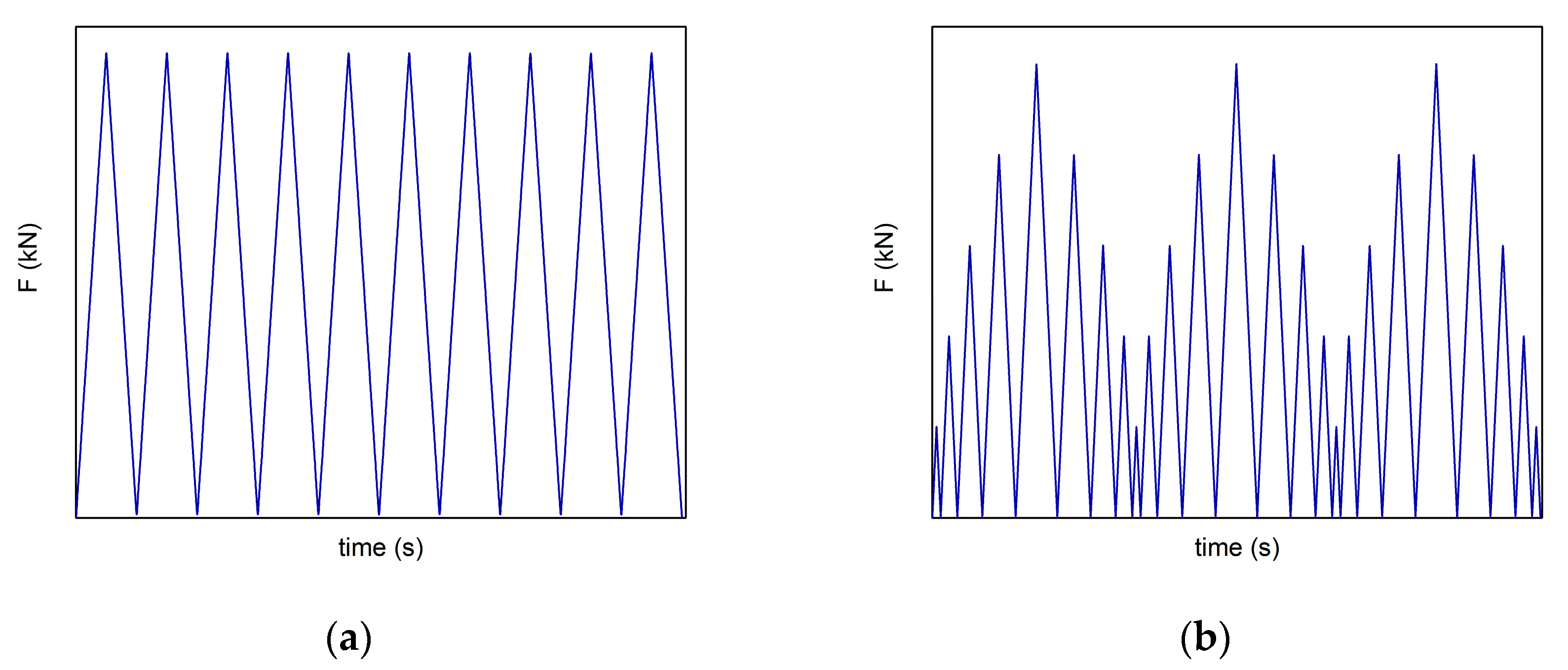


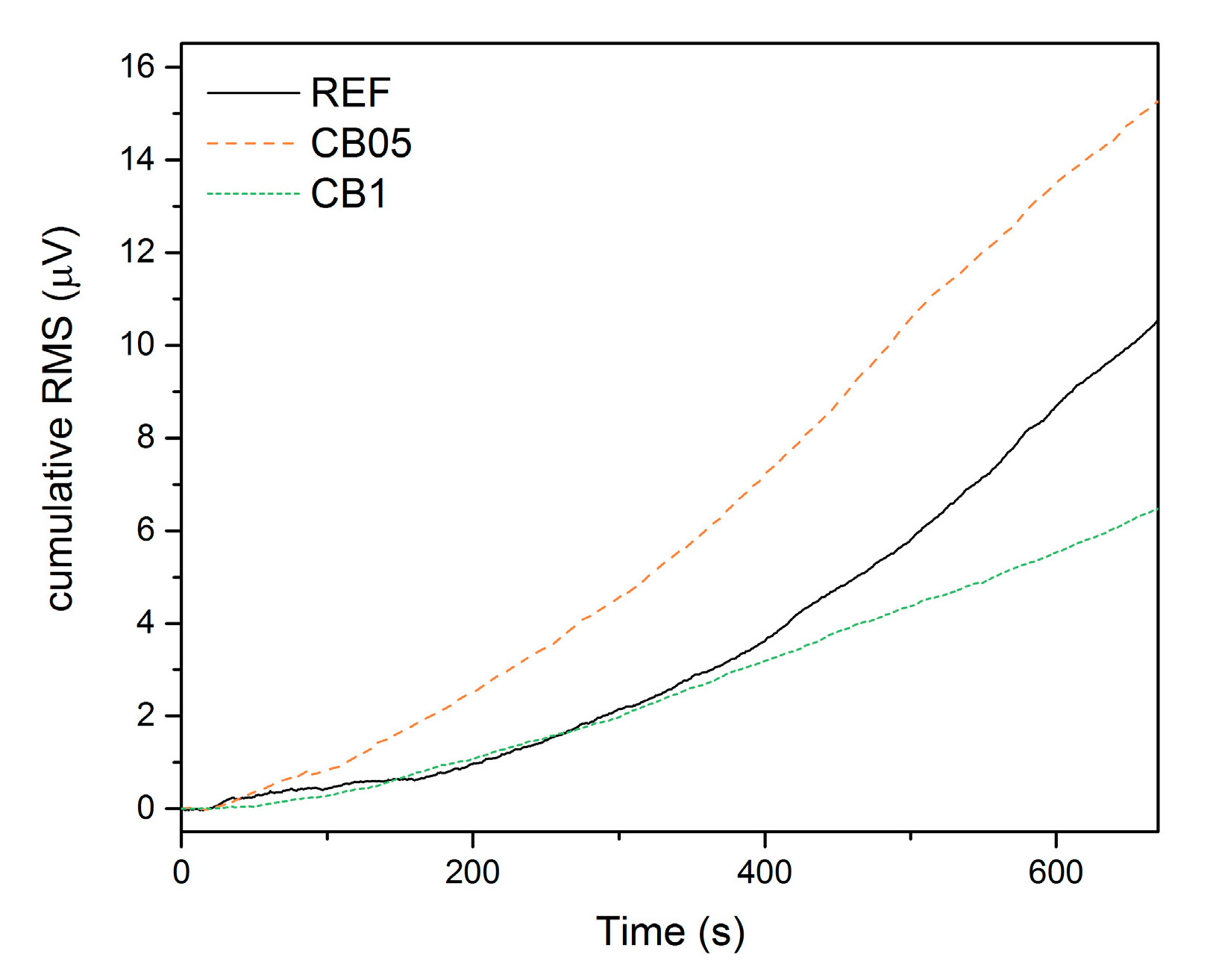
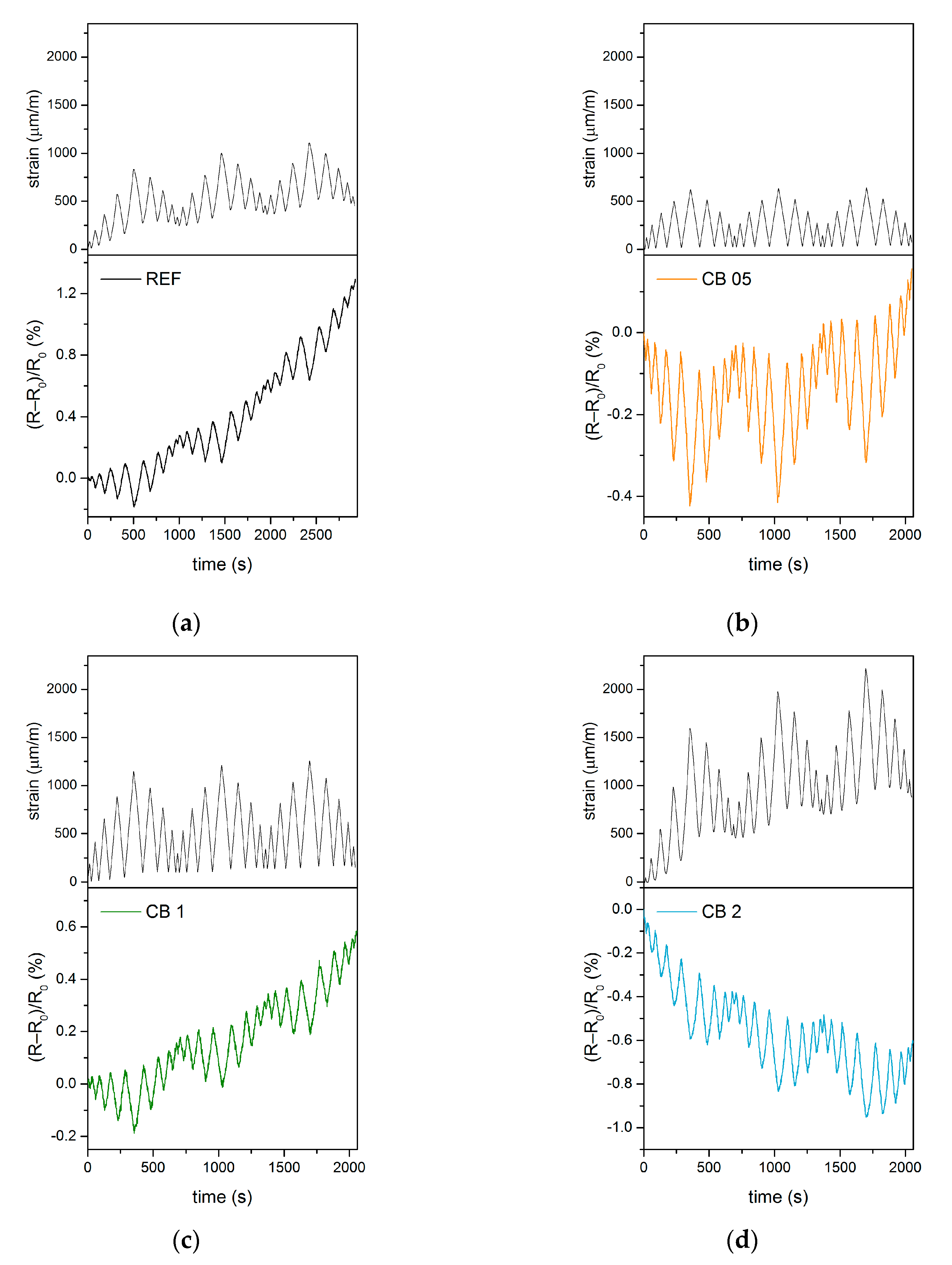
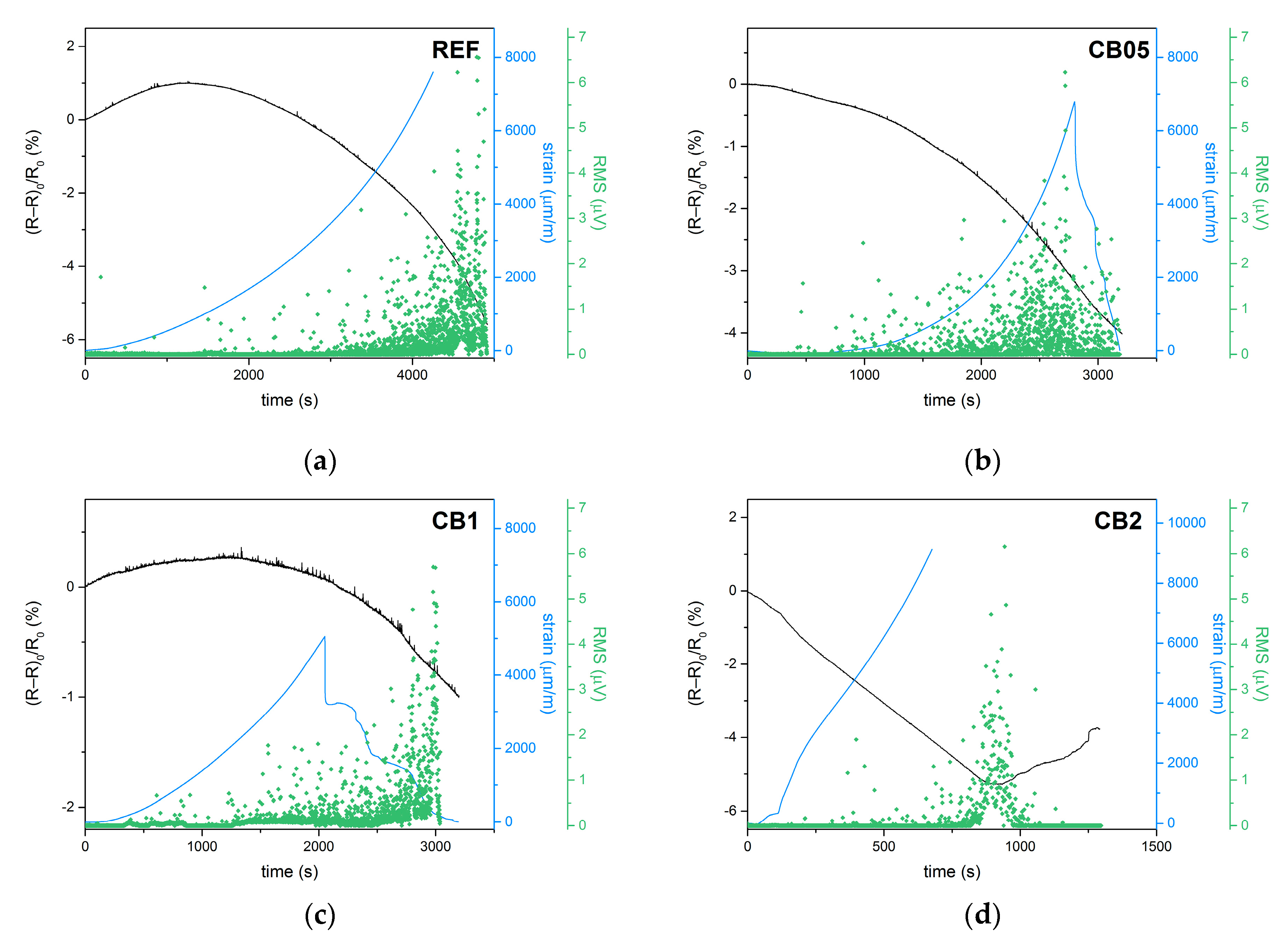
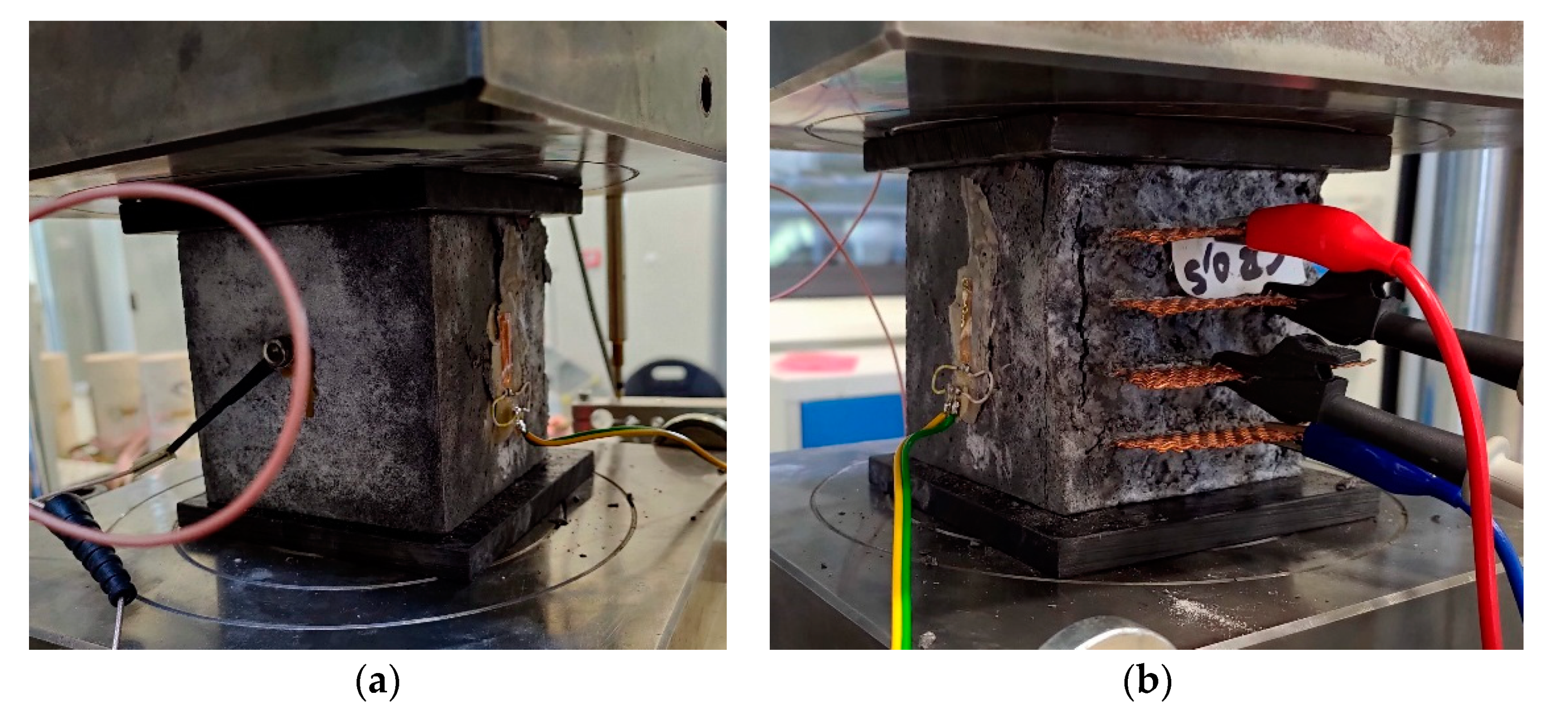
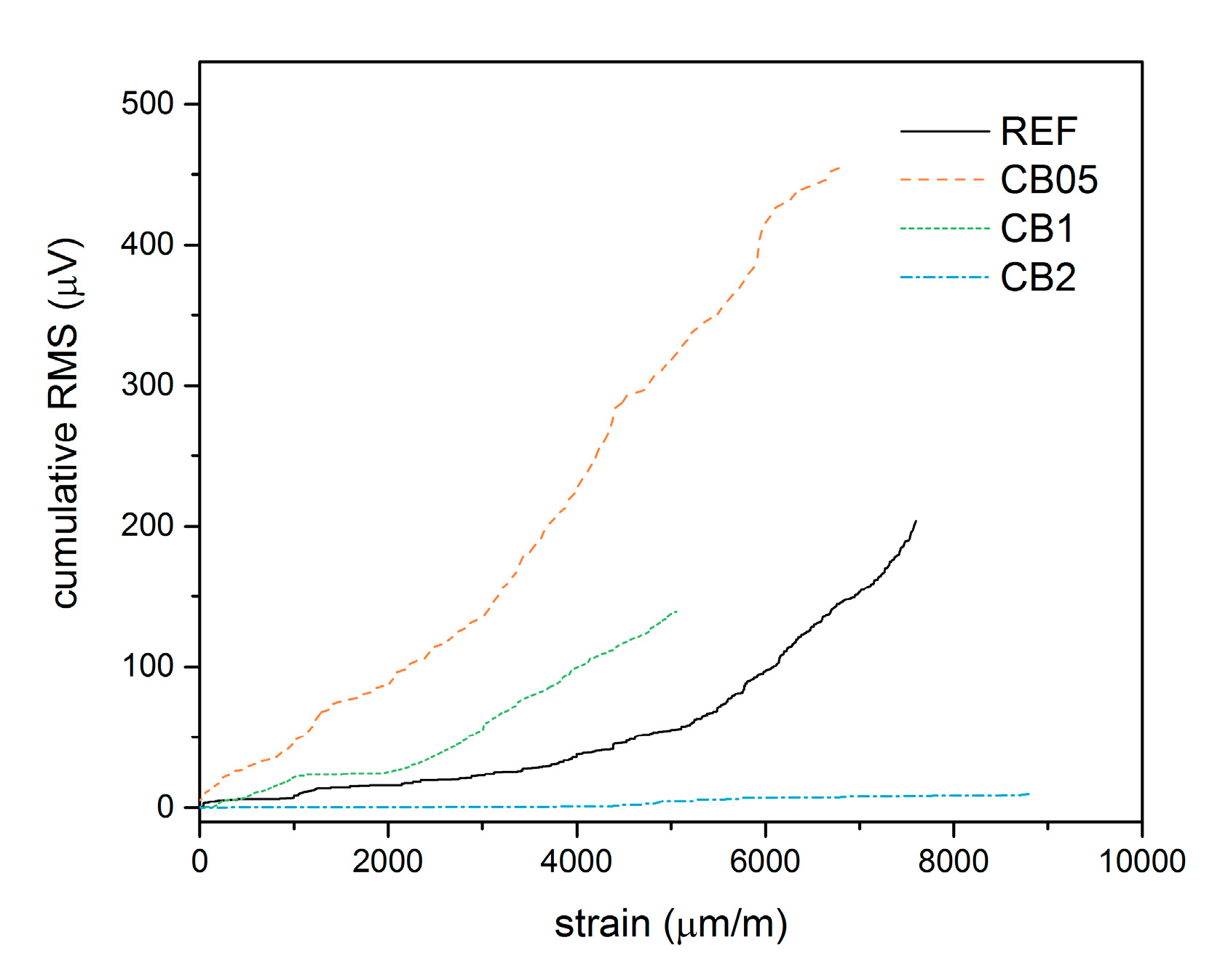
| SiO2 | Al2O3 | Fe2O3 | CaO | MgO | K2O | Na2O | MnO | TiO2 |
|---|---|---|---|---|---|---|---|---|
| 51.67 | 23.31 | 7.08 | 4.45 | 0.36 | 2.95 | 0.77 | 1.14 | 1.00 |
| Component | REF | CB 05 | CB 1 | CB 2 |
|---|---|---|---|---|
| Fly ash (g) | 1200 | 1200 | 1200 | 1200 |
| Water glass (g) | 960 | 960 | 960 | 960 |
| Quartz sand (g) | 3600 | 3600 | 3600 | 3600 |
| Carbon black (g) | - | 6 | 12 | 24 |
| Triton X-100 (g) | - | 6 | 12 | 24 |
| Water (g) | 120 | 120 | 120 | 130 |
| Mixture | REF | CB 05 | CB 1 | CB 2 |
|---|---|---|---|---|
| Gauge factor | 2.53 ± 0.20 | 6.0 ± 0.08 | 1.75 ± 0.04 | 4.60 ± 0.33 |
| Initial resistance (Ω) | 36.8 | 33.6 | 22.1 | 24.3 |
Publisher’s Note: MDPI stays neutral with regard to jurisdictional claims in published maps and institutional affiliations. |
© 2021 by the authors. Licensee MDPI, Basel, Switzerland. This article is an open access article distributed under the terms and conditions of the Creative Commons Attribution (CC BY) license (https://creativecommons.org/licenses/by/4.0/).
Share and Cite
Mizerová, C.; Kusák, I.; Topolář, L.; Schmid, P.; Rovnaník, P. Self-Sensing Properties of Fly Ash Geopolymer Doped with Carbon Black under Compression. Materials 2021, 14, 4350. https://doi.org/10.3390/ma14164350
Mizerová C, Kusák I, Topolář L, Schmid P, Rovnaník P. Self-Sensing Properties of Fly Ash Geopolymer Doped with Carbon Black under Compression. Materials. 2021; 14(16):4350. https://doi.org/10.3390/ma14164350
Chicago/Turabian StyleMizerová, Cecílie, Ivo Kusák, Libor Topolář, Pavel Schmid, and Pavel Rovnaník. 2021. "Self-Sensing Properties of Fly Ash Geopolymer Doped with Carbon Black under Compression" Materials 14, no. 16: 4350. https://doi.org/10.3390/ma14164350
APA StyleMizerová, C., Kusák, I., Topolář, L., Schmid, P., & Rovnaník, P. (2021). Self-Sensing Properties of Fly Ash Geopolymer Doped with Carbon Black under Compression. Materials, 14(16), 4350. https://doi.org/10.3390/ma14164350







